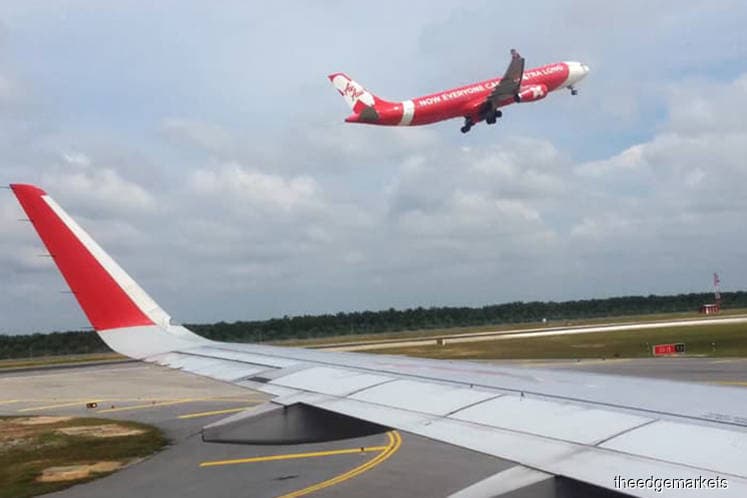
SINGAPORE (Nov 16): AirAsia Bhd is planning to use its operational data in Changi Airport Terminal 4 (T4) as an ongoing study on how to improve low-cost carrier (LCC) airport processes via digitalisation of services.
The terminal was designed to be fully automated with a range of self-service options for departing passengers called 'fast and seamless travel' (FAST), from check-in and baggage drop to immigration clearance and security screening, which includes using facial recognition technology.
The LCC said lessons from the ongoing case study will be rolled out across the group's operations. AirAsia is Asia's biggest LCC by passengers carried, flying 56.6 million passengers in 2016.
"FAST is the future. The improved savings and efficiencies from FAST align perfectly with our quest to maintain the lowest cost structure as well as our vision of seamless travel, which means lower fares for our guests and more traffic for Changi," said group chief executive officer Tan Sri Tony Fernandes.
He added that AirAsia is also planning to work with US data-mining firm Palantir Technologies to develop "a secure entry system for trusted travellers to speed up immigration at airports within Asean" through collaboration with airports and government agencies.
This collaboration with Palantir also aims at improving "operation, safety and commercial processes within the group by integrating data from multiple sources using Skywise by Airbus", said Fernandes.
Skywise is an open data platform launched by Airbus last June. It aims to be the single source of reference for aviation players to improve operational performance and support their respective digitalisation processes.
AirAsia moved from Terminal 1 to T4 on Nov 7 and is the largest foreign LCC in Singapore, flying over one in eight passengers. LCCs made up 49.6% of Singapore's air passenger traffic in 2016.
T4 is Changi Airport's smallest terminal, designed at half the size of its Terminal 3 with 225,000 square metres of total floor area. However, its design capacity of 16 million passenger movements annually is two-thirds that of Terminal 3.
Its three-year construction was completed in December 2016, and it began operating on Oct 31. Changi is the world's sixth busiest airport for international traffic with 58.7 million passengers in 2016.
Speaking to the media in Singapore, Fernandes lavished praise on Changi Airport Group (CAG) as an airport operator that understands how LCCs operate and appreciates the power of digitalisation to enhance airport experience.
"More importantly, CAG treats us like partners and are always looking for a win-win solution that benefits everyone," added Fernandes.
The LCC said it expects to benefit from CAG's growth incentives for new passengers and new city links which it says will allow for more flight additions and new route introductions.
AirAsia had been pushing a digitalisation strategy with investments in pre-flight, inflight and post-flight services. These include inflight wi-fi access ROKKI, online shopping via its Big Duty Free catalogue and BIG loyalty programme.
In April, it acquired 50% equity in trip-planning start-up Touristly Travel Sdn Bhd in a deal worth RM11.5 million. The acquisition included the injection of AirAsia's digital platform of its Travel 3Sixty inflight magazine and the appointment of Fernandes as board chairman.
At 12.30pm today, AirAsia shares settled at RM3.18, giving a market capitalisation of RM10.63 billion. The counter had gained 38.86% year to date, outpeforming the FBM KLCI's 4.82% rise.